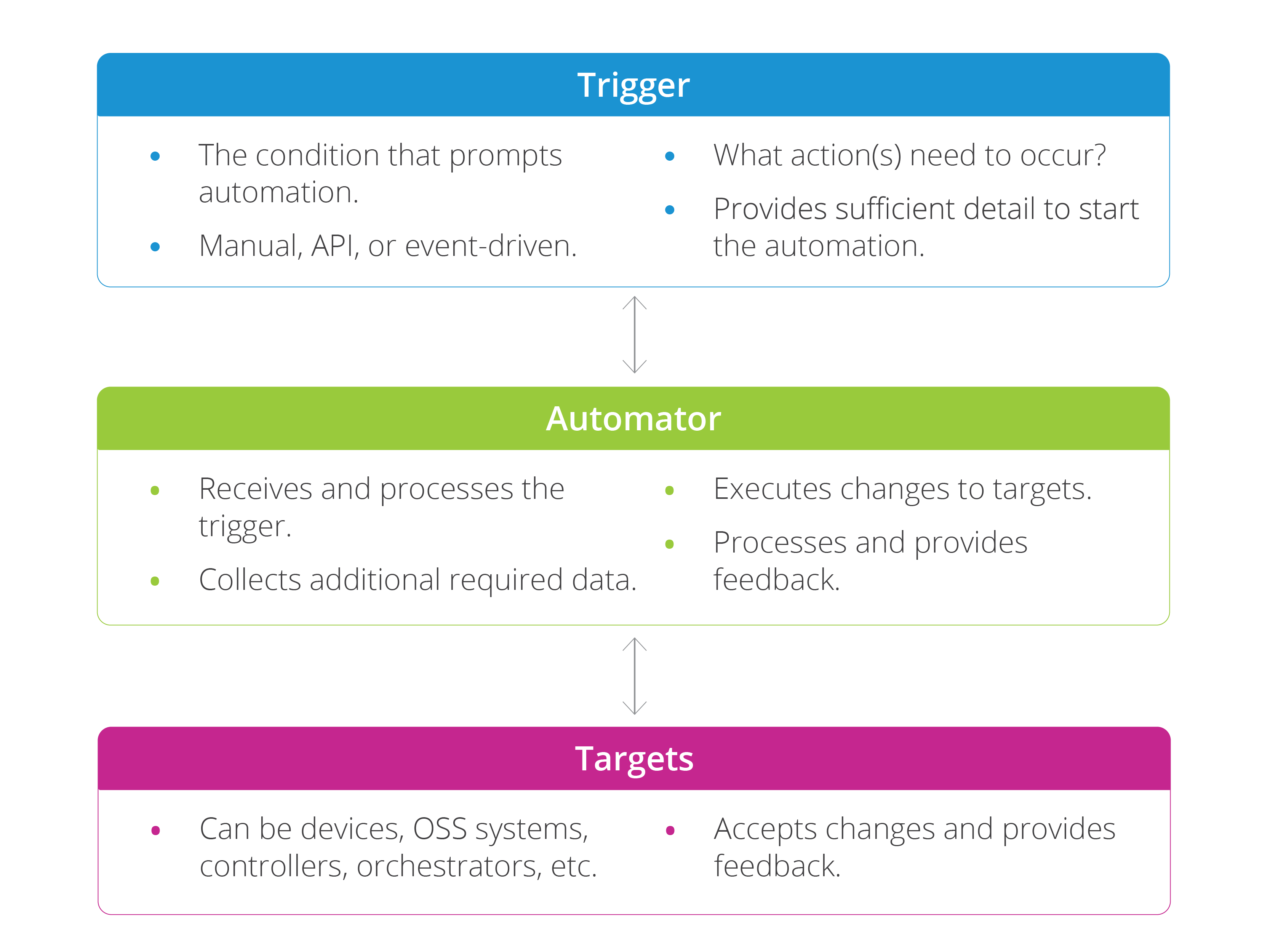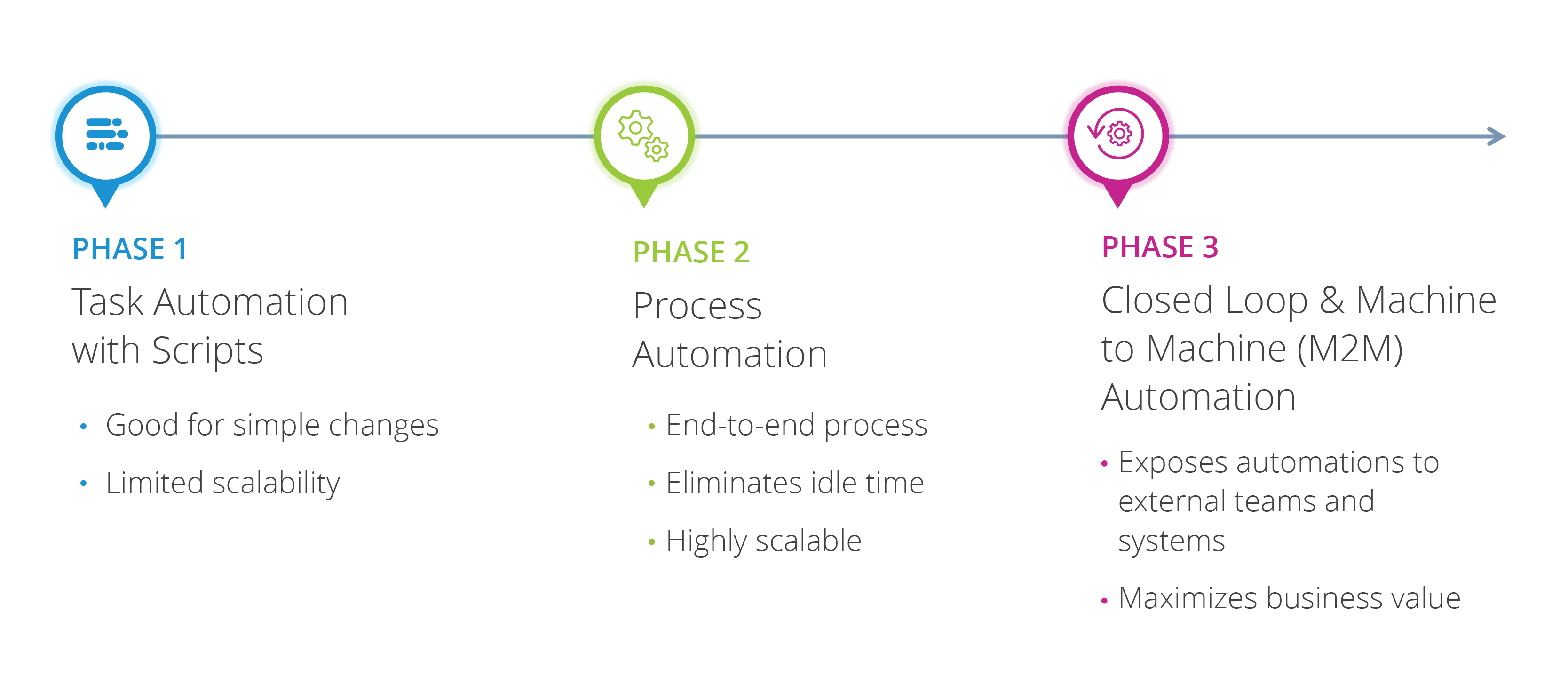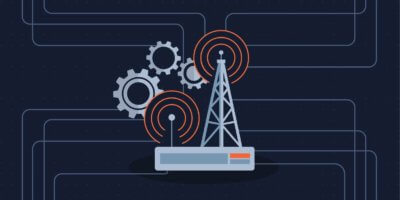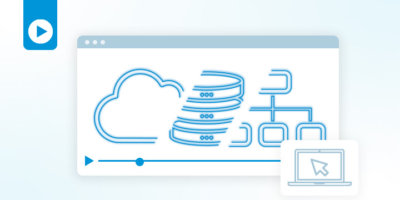Share this

The rush to 5G has triggered an evolution of backhaul (cell site routers and aggregation routers) in virtually every mobile operator. Technologies such as ethernet backhaul, fiber to the cell site, front-haul/mid-haul, distributed virtual RAN, microwave, and small cells are driving these changes in the backhaul networks, adding new complexity and diversity to what has previously been a relatively homogeneous network.
These changes are being driven by new 5G capabilities and the projections for accelerated growth in network traffic and the only way to support this evolution is through automation. Network automation is a critical component for any Communications Service Provider (CSP) to keep up with the intensity and volume of changes to the IP backhaul network. So, before you embark on an automation project to support your backhaul network changes, let’s first start by identifying the essential components of a backhaul automation solution in order to achieve significant positive business outcomes.
Essential Components of an IP Backhaul Automation Solution
At a high level, the components of a backhaul automation solution are not that different than any other automation solution. There are events (or Triggers) that initiate the need for an automation to execute, there is an Automator that performs the automation, and there are Targets or the objects that the automation is performed on.
Automation Triggers
In an IP backhaul environment, there are multiple potential triggers – including, creation/configuration of a new router, device upgrade, health checks, fault resolution, and maintenance. Triggers can be manually initiated, such as in situations where an engineer or operations team member initiates a change to a device, or they can be automatically initiated, such as in situations where an assurance system detects a network change and subsequently launches a closed-loop operation to recover from the error.
Automators
The Automators for IP backhaul can take one of many forms, and in some environments, the Automators go through a maturity and evolution, as the engineers and operations team members become more sophisticated and begin to utilize more powerful automation and orchestration tools.
Targets
The third component of the automation architecture, the targets, is going through a similar evolution. Initially, the targets of automation were physical network elements – routers and switches. Later, network automation began to be executed on virtual network functions and on network controllers, like SDN or SD-WAN controllers. Now, network automation can be performed across a wide range of targets, including physical, virtual, or containerized network functions, network applications, SDx controllers, orchestrator/configurators, and cloud environments (public, private, hybrid).
For the IP backhaul use case, the ability to automate and orchestrate a wider range of endpoints will be essential, as operators are quickly moving from physical devices to virtualized or containerized routing functions at the cell site and are moving toward disaggregated platforms (routing software and whitebox devices) in place of traditional routers.
The Three Phases of IP Backhaul Automation
For most CSPs, automation efforts associated with those components will reflect a phased evolution, which begins with relatively simple automation activities, progressing through more complex use cases and ultimately ending with fully automated processes that take advantage of machine-to-machine automations and closed loop. These phases are useful from a planning perspective and can help CSPs understand where they are versus where they want the automation infrastructure to be in order to obtain the optimal business impact.
Phase 1: Task Automation with Scripts
Most automation journeys begin with simple scripts as the Automator. These can be things like Shell or Python Scripts and they typically focus on automating a specific task – for example, if the engineering team needs to change the NTP server on every one of their cell site routers, they may make a python script that will connect to each router, change the NTP server address, and move on to the next one. Scripting is very powerful for task level automating, so it is useful at the individual engineer level for improving productivity yet as teams attempt to scale up.
Phase 2: Process Automation
The second phase of an automation journey focuses on evolving from task-centric automation to process-centric automation. This typically requires more sophisticated tools, but the business benefits are significantly better than task-centric automation for a few reasons:
- Process-centric automation includes more activities within the automation domain. The more activities that can be automated, the more manual activity and effort can be pulled from the process, and the more idle time can be removed.
- Less manual activity and idle time results in faster execution of the business process with less effort.
- Changes can be performed more rapidly, with more accuracy and less manual effort.
Phase 3: Closed Loop & Machine to Machine Automation
The third phase in the evolution of the automation journey focuses on exposing the Automator’s capabilities to external teams and systems – so instead of a human being the initiator of the automation activity, the Automator is prepared to accept triggers from systems or from the network itself. There are a wide range of scenarios where this can have a transformative impact on engineering and operations activities. In this phase, the business value of the automation efforts goes up significantly, as the volume of activity, and subsequently the value delivered, can go up at a much faster rate due to the activities not requiring any interventions from engineering or operations to execute.
Itential’s IP Backhaul Automation Solution
The Itential Automation Platform is the perfect Automator for any CSP to leverage for IP backhaul automation. Itential now offers a packaged solution specifically for Cell Site Backhaul automation combining the Itential Automation Platform, along with pre-built and integrated components that are focused on automating the most common and time-consuming activities associated with the creation and management 4G/5G backhaul networks and routers.
To learn more about The Itential Cell Site Backhaul Solution and how it can help your business automate a multitude of cell site backhaul use cases click here. You can also get a deep dive into backhaul automation as well as better understand the business impact and benefits of it in Itential’s “Accelerating 5G Evolution Through IP Backhaul Automation” white paper.






